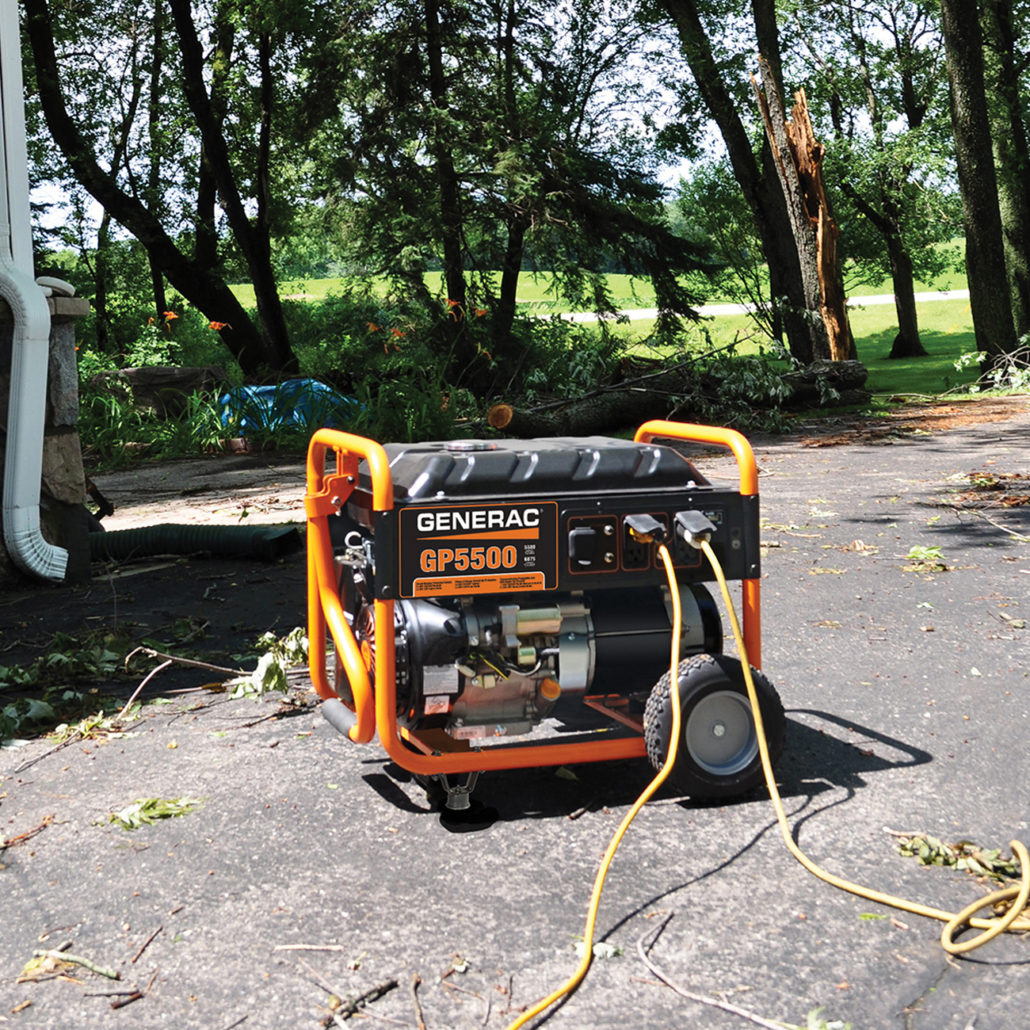Portable Generators
Emergency Home Power Risks
Portable generators are often used in severe weather emergencies.
Know the facts to stay safe!
Portable generators are great tools when used for the correct purpose and in the correct location. They provide an electrical supply for work sites to operate power tools, they increase comfort in remote locations such as camping sites or cabins by powering portable lights and fans, and they are often used for backup household electrical power when the main power source goes off.
In the event of sudden and severe weather causing power outages, many people rush out to purchase portable generators. Unfortunately, either to missing information or haste, portable generators are often used incorrectly. This is extremely unsafe and can be life-threatening.
Here are some of the main points of safety when using a portable generator for emergency home power needs:
HOME ELECTRICITY – MAJOR RISKS
FUEL :
Portable generators must have gasoline to run. In post-hurricane situations, fuel may be in short-supply. However, keeping fuel stored at home is risky. Fuel must be stored away from the portable generator and any other object that emits heat, flames or sparks.
Portable generators get hot while running and need time to cool off. Refueling must be done while the portable generator is turned off and after it has cooled completely. Hot portable generator parts and fuel spills can ignite a fire.
CARBON MONOXIDE :
Fatal Carbon Monoxide Incidents & Deaths Associated with Engine-driven Tools:
Between 1999 and 2012, portable generators were shown to be linked to 79%+ of the total number of deaths.*
Portable generators must be kept at least 30’ away from the walls of your home or any openings into it. Carbon monoxide is an odorless, colorless, tasteless gas that can blow with wind. This also applies to temporary housing such as campers and tents.
ELECTRICAL SHOCK RISKS :
Portable generators also need dry locations away from rain and water to operate safely.
Plugging portable generators into home outlets is not only illegal, it is highly dangerous. Backfeeding, as it is called, can cause electrocution inside and outside of your home. Professionally installed transfer switches are necessary to safely transfer power to any building.
Transferring electrical power from a portable generator requires the use of a heavy duty extension cord that is rated for outdoor use. The extension cord must be free of tears, cuts and crimps. Placement for the cord should avoid the risk of tripping and covering.
HOME ELECTRICITY – INCONVENIENCES
FUEL COSTS :
Typically, a 5,000 watt industrial-type, portable generator consumes approximately 18 gallons of gas per 24 hours at full load. That is over 3 five-gallon containers of fuel to bring home and refill daily!
However, even at partial load this type of generator consumes almost the same amount of fuel because of the way it is designed. At $3.50 per gallon, that’s a cost of $63 per day.
CARBON MONOXIDE :
Poisoning by carbon monoxide results in illness symptoms such as nausea, dizziness, light-headedness and headaches. Many deaths occur because these symptoms are not noticed while sleeping. And, high levels of carbon monoxide can be fatal in minutes.
While sleeping, the safest use of a portable generator is to turn it off. This can result in uncomfortable sleeping conditions.
OTHER :
May be too heavy for some users.
May be too loud in some locations.
May not provide enough power to meet basic needs.
The actual use and comfort may not warrant the expense of the generator and operation.
* SOURCE: Consumer Product Safety Commission, https://www.cpsc.gov/Global/Research-and-Statistics/Injury-Statistics/Carbon-Monoxide-Posioning/GeneratorsAndOEDTFatalities2013FINAL.pdf
Standby Home Generators
Power You Can Count On!
A Home Standby Generator system provides whole house power within seconds of a power failure.
Our site explains it all: wheelergenerators.com or contact us at 1-800-WHEELER for more information.





